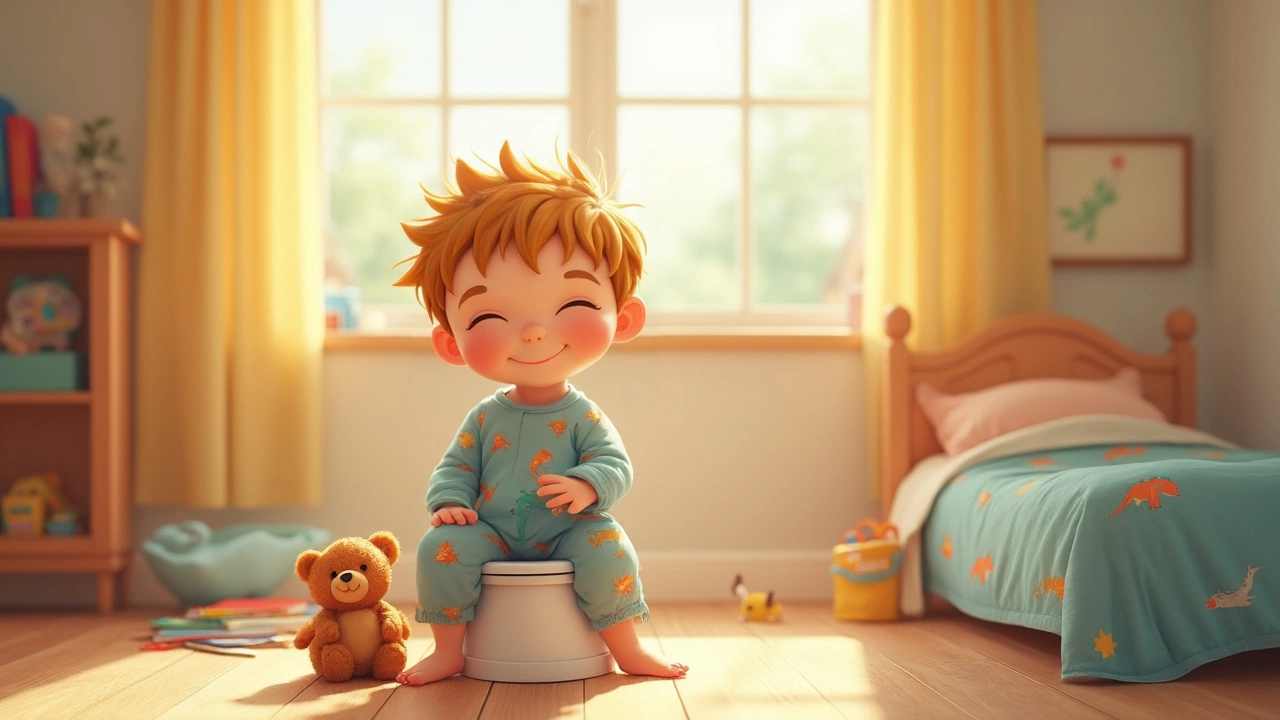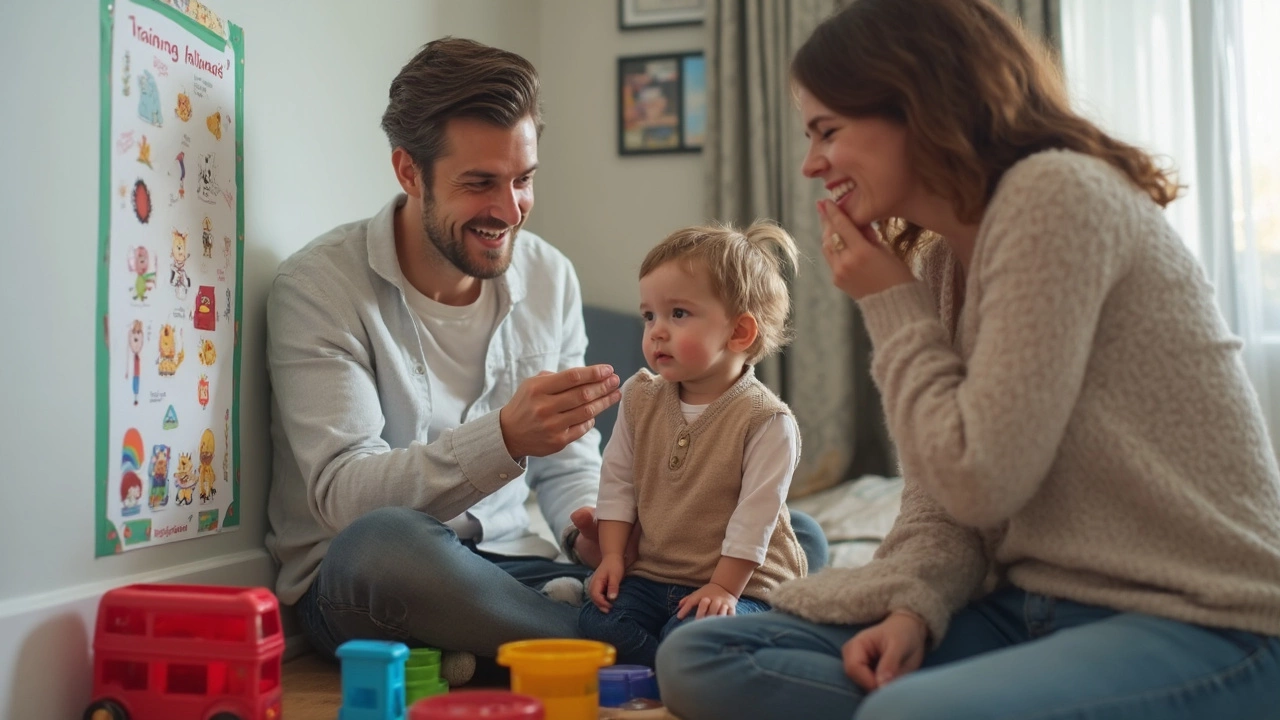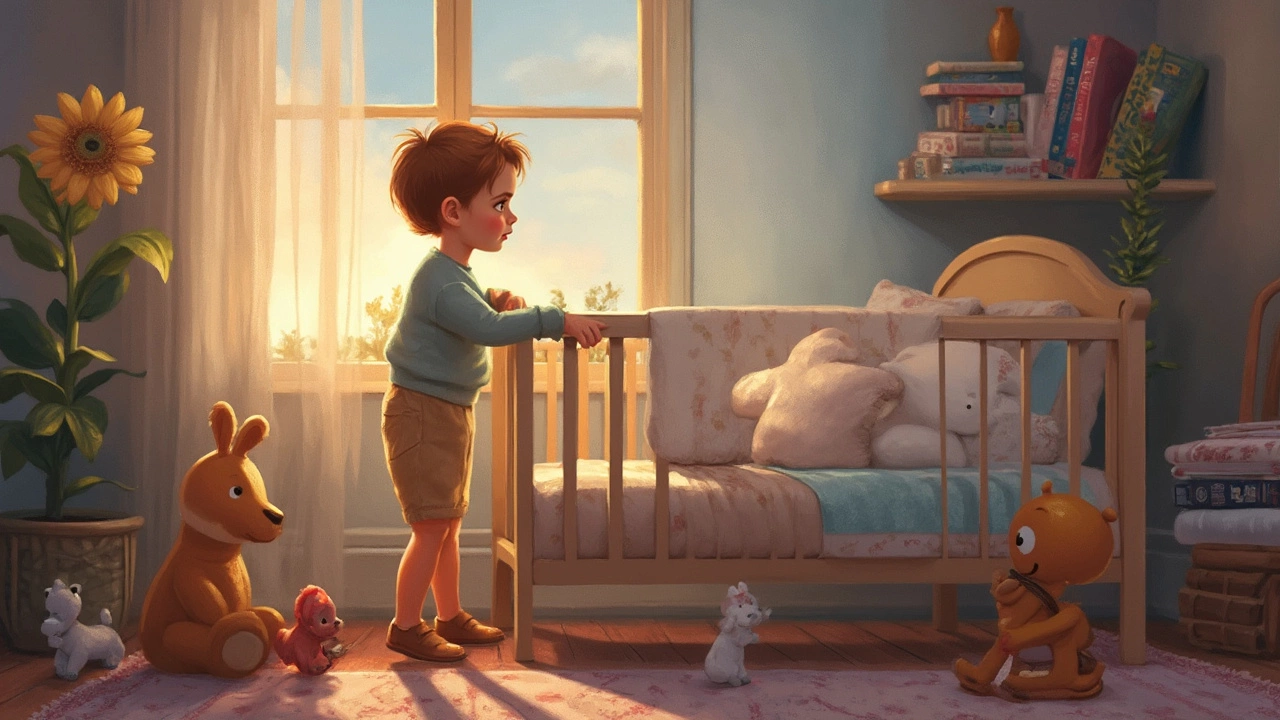Potty Training a Toddler: When’s the Right Time?

The pressure to ditch diapers hits hard as soon as your toddler gets close to age two—or sometimes even earlier if your mom friends are bragging. But honestly, there’s no magic number. Some kids are totally ready by 18 months, while others are still figuring it out at three and nobody has failed as a parent because of it.
Forget about what your neighbor’s kid is doing. Look at your child: do they wake up dry from naps, or tell you when they’ve peed? These are stronger signs than any birthday on the calendar. Potty training is a skill, not a race, and pushing before your toddler is actually ready can lead to tears, power struggles, and way more accidents than anyone needs.
You can help things along by learning to spot the real signs (not the made-up ones you see on social media). Stick around—there are plenty of simple tricks and surprising facts ahead to make potty training a little less overwhelming.
- Is There a 'Best Age' for Potty Training?
- How to Tell When Your Toddler Is Ready
- Common Myths (and What Really Matters)
- Tips for a Smooth Potty Training Experience
- Potty Training and the Toddler Bed Switch
Is There a 'Best Age' for Potty Training?
If there's one thing that stresses parents out, it's that nagging question: “When should I potty train my toddler?” The truth is, there’s no exact age that works for every kid. Pediatricians usually say anywhere from 18 to 36 months is typical, but that’s a big range for a reason. Some little ones just don’t care about the potty until closer to age three, and that’s totally normal.
Here’s a table with average ages for starting and finishing potty training, based on data from the American Academy of Pediatrics:
| Milestone | Average Age |
|---|---|
| Shows Interest | 18-24 months |
| Starts Training | 24-30 months |
| Daytime Dry | 2.5-3.5 years |
| Nighttime Dry | 3-5 years |
Boys, on average, tend to start and finish potty training a few months later than girls. This isn’t a rule, just something that often happens. Also, kids who have older siblings sometimes learn earlier just because they want to copy their brother or sister.
Forcing the process just because you see other kids out of diapers won’t speed things up and usually causes setbacks. What works is paying attention to your own child, being patient, and not making it a competition. The best time to start is when your toddler shows clear signs they’re ready—no matter what age is on their birthday cake.
How to Tell When Your Toddler Is Ready
Trying to guess when your toddler should start potty training is like trying to guess the weather—sometimes you nail it, sometimes you get caught in a thunderstorm of accidents. Kids tend to show a bunch of solid signals when they’re ready to ditch diapers—and age isn’t even the most important part.
Some key signs that your child is ready for potty training:
- Pulling at a dirty or wet diaper or asking for it to be changed
- Hiding to pee or poop (it’s weird, but it’s a thing)
- Staying dry for at least two hours at a time or waking up dry from naps
- Showing interest in grown-ups’ bathroom habits (toddlers are curious and love to copy)
- Understanding and following simple instructions
- Being able to walk to the bathroom and pull down their pants without help
- Letting you know with words or gestures that they’re about to go, or have just gone
If you’re seeing a few of these, your kid is probably getting close. According to the American Academy of Pediatrics, most kids show these signs between 18 and 30 months, but some are earlier or later—and that’s normal. There’s seriously no award for the youngest potty-trained child.
Check out what parents actually report:
| Readiness Signal | % of Toddlers Showing by Age 2 | % by Age 3 |
|---|---|---|
| Stays dry at least 2 hours | 55% | 95% |
| Follows simple instructions | 70% | 98% |
| Shows interest in toilet | 45% | 88% |
Don’t stress about hitting every single milestone right away. Progress often comes in spurts (pun intended). If your toddler suddenly regresses—like if you’ve just switched to a toddler bed or started daycare—it’s not a failure. Just means their brain is busy with a million things at once.
You know your child better than anyone. If you think they’re ready to start, trust your gut and give it a go. And if it’s too early, give it a breather. Nobody ever graduates high school in diapers.

Common Myths (and What Really Matters)
People love to toss around advice about potty training. Some of it’s pure myth, and believing these bits can actually make the whole process way more stressful for you and your kid.
Let’s bust some of the most common ones.
- Myth #1: "There’s a perfect age for potty training." Nope. Kids are all over the map. Pediatricians have found that kids in the U.S. usually start anywhere from 18 to 36 months, but there’s no finish line everyone has to cross at the same time.
- Myth #2: "If your child is in a toddler bed, they must be ready." Switching beds and potty training don’t always line up. Some kids adjust to big-kid beds fast but still need time to figure out toilet stuff. Don’t tie one milestone to the other.
- Myth #3: "Once you start, you have to finish." If things turn into a meltdown or your toddler starts holding in pee, it’s totally fine to pause. Kids can regress during stressful times, like after moving or a new sibling arrives.
- Myth #4: "Girls train before boys every time." On average, girls might train a few months earlier, but individual personality has a way bigger impact. You’ll see early and late trainers of every gender.
- Myth #5: "If it takes more than a weekend, something’s wrong." Ignore those viral three-day stories. Some kids "get it" quickly, but most need a few weeks—or longer. It’s totally normal to have accidents even months later.
So what should you focus on? Watch for real signs of readiness instead of following the crowd. Actual cues include staying dry for at least two hours, showing interest in the toilet, understanding simple directions, and being able to pull pants up and down. Trying to force things before your child is developmentally ready can make everything harder.
Here’s a quick look at when most kids start and complete toilet training:
| Age Range | Start Potty Training (%) | Fully Trained (%) |
|---|---|---|
| 18-24 months | 40% | 10% |
| 25-36 months | 80% | 60% |
| 37+ months | 20% | 90% |
If your kid’s not matching the chart, don’t worry. The experts agree—late bloomers catch up just fine. Stay flexible and let your child lead; they really will get there.
Tips for a Smooth Potty Training Experience
If you’re feeling a mix of dread and confusion about potty training, you’re not alone. But there are some tried-and-true strategies that can save your patience (and your floors). Here’s what works for most families in the real world—not just in parenting books.
- Pick a weekend, not a random Tuesday night. Most parents find it easier to start potty training when they have at least a couple of days in a row at home. This lets you focus on your child and the process, instead of squeezing potty breaks between errands.
- Dress your toddler in clothes they can pull down fast. Skip the tiny jeans with a dozen buttons or the footie pajamas on training days. Easy-to-remove bottoms mean fewer accidents and less stress for you both.
- Choose the right gear. A kid-friendly potty chair or seat insert can make a big difference. Some kids get nervous about falling in, so having a seat their size helps them feel safe.
- Take regular potty "pit stops." Aim for every couple of hours and right after meals. Even if they say they don't have to go, making potty breaks part of the routine keeps things moving forward.
- Positive vibes only. Skip shaming or scolding when things don't go as planned. Give high fives, silly songs, or stickers for sitting or trying, even if nothing happens at first.
- Teach hygiene every single time. Wiping front-to-back (especially for girls) and washing hands are musts. Make it fun by letting your toddler pick their favorite soap or sing a 20-second song while washing.
Here’s a quick look at what’s actually normal when it comes to the potty training process:
| Milestone | Usual Age Range | Percentage of Kids |
|---|---|---|
| Showing Interest in Potty | 18-24 months | ~60% |
| Fully Daytime Trained | 2-3 years | ~65%-70% |
| Nighttime Trained | 3-5 years | 50% by 3.5 years |
If you feel stuck, try switching things up instead of doubling down. Sometimes, a break and trying again in a month or two makes all the difference—it’s not giving up, it’s just working with your toddler’s unique pace. And remember, good sleep and potty progress go hand-in-hand, especially when your little one has moved to a new bed.

Potty Training and the Toddler Bed Switch
Switching to a toddler bed usually goes hand-in-hand with big changes, like potty training. It’s not just a coincidence—these milestones both pop up around age two or three for most kids. But making both changes at the exact same time? That can be a recipe for chaos, especially if your little one gets stressed with too many new things at once.
Here’s the thing: moving your child to a toddler bed can actually make potty training easier if they’re ready. Suddenly, they can get up and use the bathroom on their own, which is key for nighttime and nap-time dryness. But if you switch beds too soon, or start potty training before your child is truly ready, you could end up with more accidents and late-night wake-ups—neither of which are fun.
- If your child’s waking up dry (or mostly dry), it’s a good sign they might be ready for both the bed and potty milestones.
- Try not to overlap big changes unless you’re sure your toddler can handle it. For some families, potty train first, then introduce the big-kid bed a few weeks later.
- Keep a small potty next to the bed at night at first. This makes it less scary for them (and less work for you) during those early weeks.
So, how common is it to tackle both at once? Check out the table for what parents usually see:
| Timing | Potty Training Success Rate | Notes |
|---|---|---|
| Potty trained before switch to bed | 70% | Fewer accidents at night |
| Toddler bed switch before potty training | 60% | Some confusion adjusting to both changes later |
| BOTH at same time | 45% | More setbacks and sleep disruptions |
According to pediatrician surveys from the past few years, giving a child time to master one skill before adding another leads to more success. If you do both at once, expect a bumpier ride. Keep calm, set up clear routines, and remember: every kid figures it out sooner or later. The main thing is watching for readiness—not just birthdays or what other kids are doing. That’s when potty training sticks.

